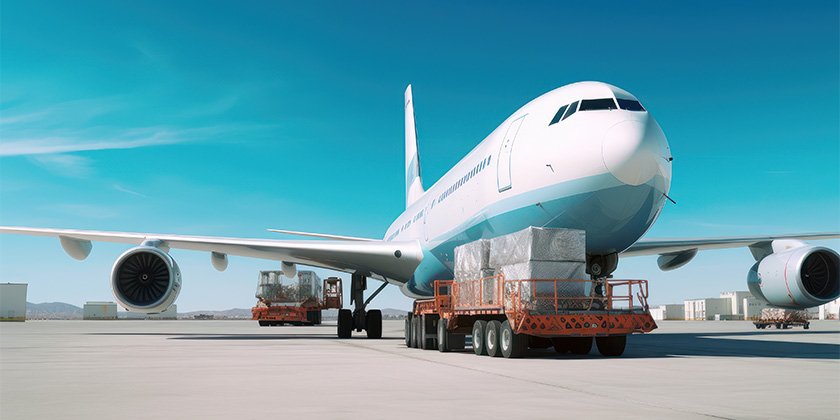The global air cargo industry is experiencing a positive trend, with demand continuing its robust growth into the second quarter (Q2) of 2024. Data released by the International Air Transport Association (IATA) reveals a positive outlook, marking the fifth consecutive month of double-digit year-on-year growth.

Rising Demand Outpaces Capacity Growth
Total air cargo demand, measured in cargo tonne-kilometers (CTKs*), rose by 11.1% in April 2024 compared to the same month in 2023. This growth is particularly impressive considering that available cargo capacity (ACTKs) increased by a slightly lower 7.1% during the same period. This imbalance suggests a healthy demand that is outpacing the current capacity available.
Optimistic Future Despite Economic Uncertainties
While economic uncertainties remain, industry experts like Willie Walsh, IATA’s Director General, believe the air cargo sector is on solid ground. He highlights the fact that air cargo demand has continued to grow even when economic indicators like the Purchasing Managers Index (PMI) pointed towards potential contraction. With PMI figures now indicating growth, the outlook for sustained strong demand is even brighter.
Factors Fueling Air Cargo Growth
Several key factors are contributing to the current air cargo boom:
- Positive Manufacturing and Export Signals: For the first time in two years, the global manufacturing output and new export orders PMIs have entered positive territory (51.5 and 50.5, respectively). This indicates a potential increase in global trade activity, which translates to higher demand for air cargo transportation.
- Stable Inflation: Inflationary pressures appear to be relatively stable across major economies like the US, EU, and Japan, with inflation rates hovering around 3%. China’s consumer price index also showed a positive 0.2% increase year-on-year, dispelling concerns about a significant economic slowdown in the region.
Regional Breakdown of Air Cargo Performance
The performance of the air cargo market varies slightly across different regions:
- Asia-Pacific Takes the Lead: Asia-Pacific Airlines led the pack with a staggering 14.0% year-on-year demand growth in April. Intra-Asia demand grew by 13.2%, while the Asia-Europe route experienced a significant 17.7% increase. While the Middle East-Asia route also witnessed growth, it was 10.4%, marking a slowdown compared to March.
- North America Shows Steady Growth: North American carriers saw a respectable 7.0% year-on-year demand growth, which was the lowest among all regions. The key trade lanes of Asia-North America and North America-Europe demonstrated positive growth of 7.3% and 5.6%, respectively.
- Europe Experiences Intra-Regional Surge: European airlines enjoyed a strong 12.7% year-on-year demand growth. Intra-European air cargo saw a remarkable surge, with a 34.4% increase compared to April 2023. This represents the highest annual growth recorded in over a decade. Europe-Middle East routes also experienced significant growth of 30.1%.
- Middle East and Other Regions Maintain Momentum: Middle Eastern carriers reported a 9.4% year-on-year demand growth, with the Middle East-Europe route performing particularly well at 30.1%. Latin American and African airlines also achieved positive growth of 11.7% and 10.6%, respectively.
Capacity Constraints Remain a Challenge: While demand is surging, capacity growth hasn’t kept pace in all regions. This could potentially lead to bottlenecks and potentially higher air cargo rates in the future. Airlines are likely to focus on expanding their fleets and optimizing operations to meet the growing demand.
Looking Ahead: A Sustainable Uptrend?
The air cargo industry seems poised for continued growth shortly. Positive economic indicators, coupled with a dynamic global trade environment, are creating a favorable landscape for air cargo transportation. However, it’s crucial to monitor how inflation and potential economic uncertainties might impact consumer spending and global trade flows. Additionally, addressing capacity constraints will be essential to ensure the industry can efficiently handle the rising demand.




